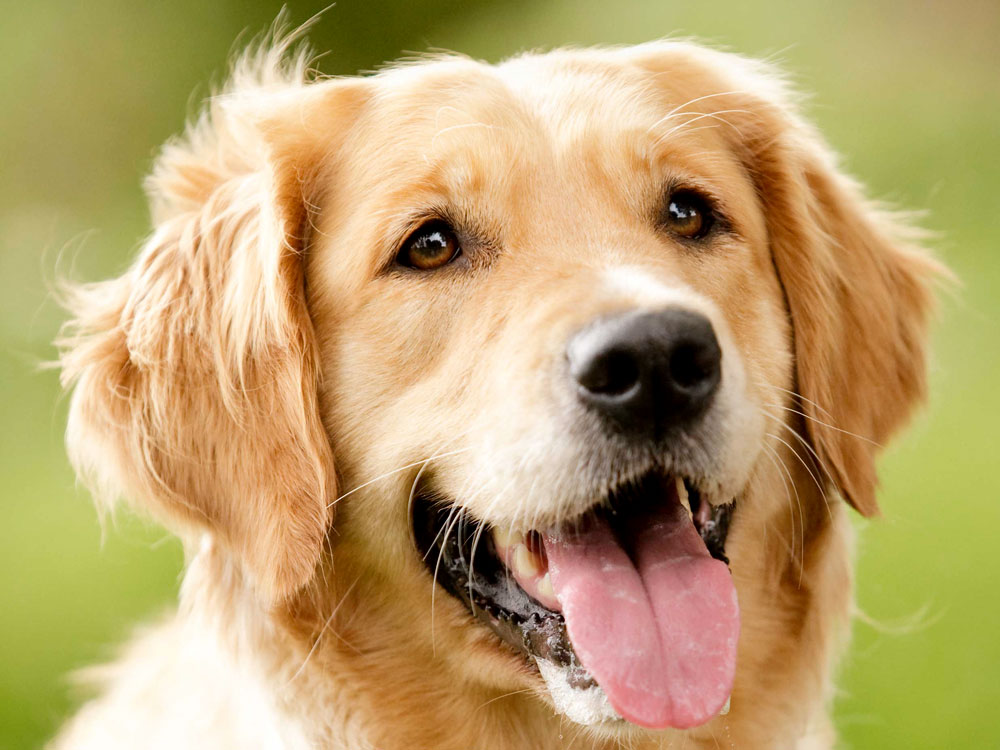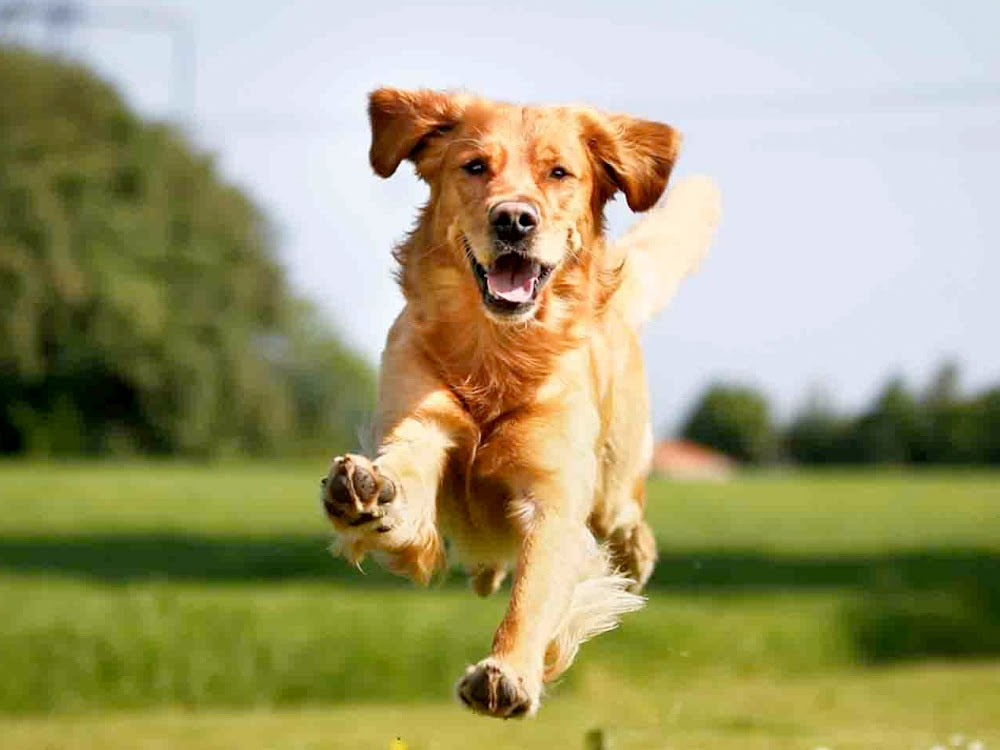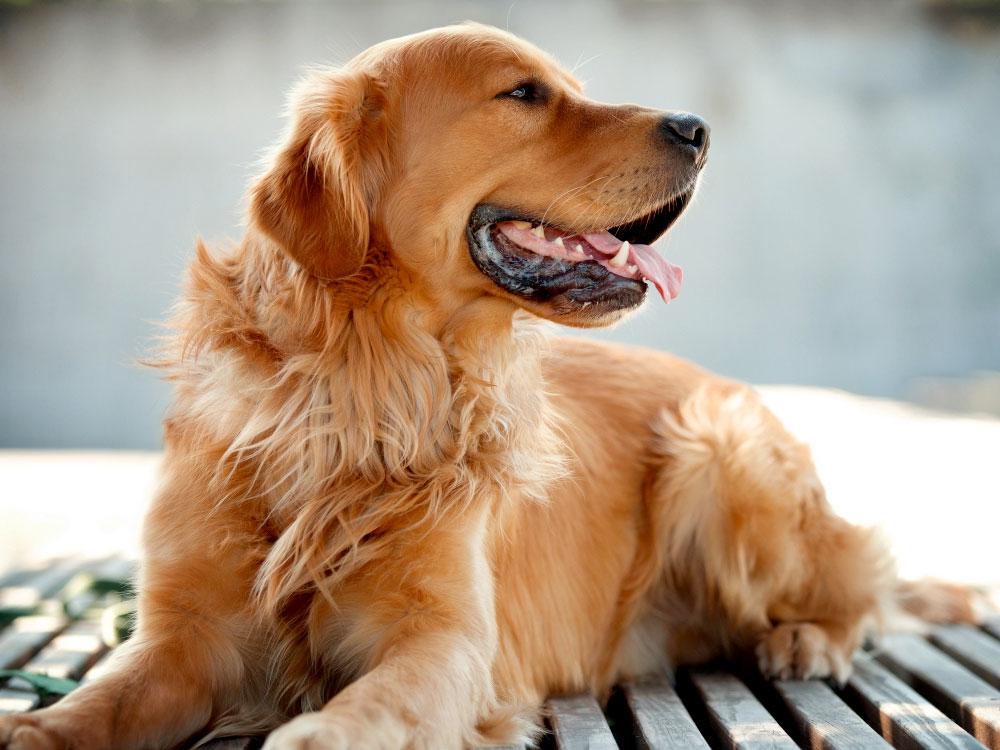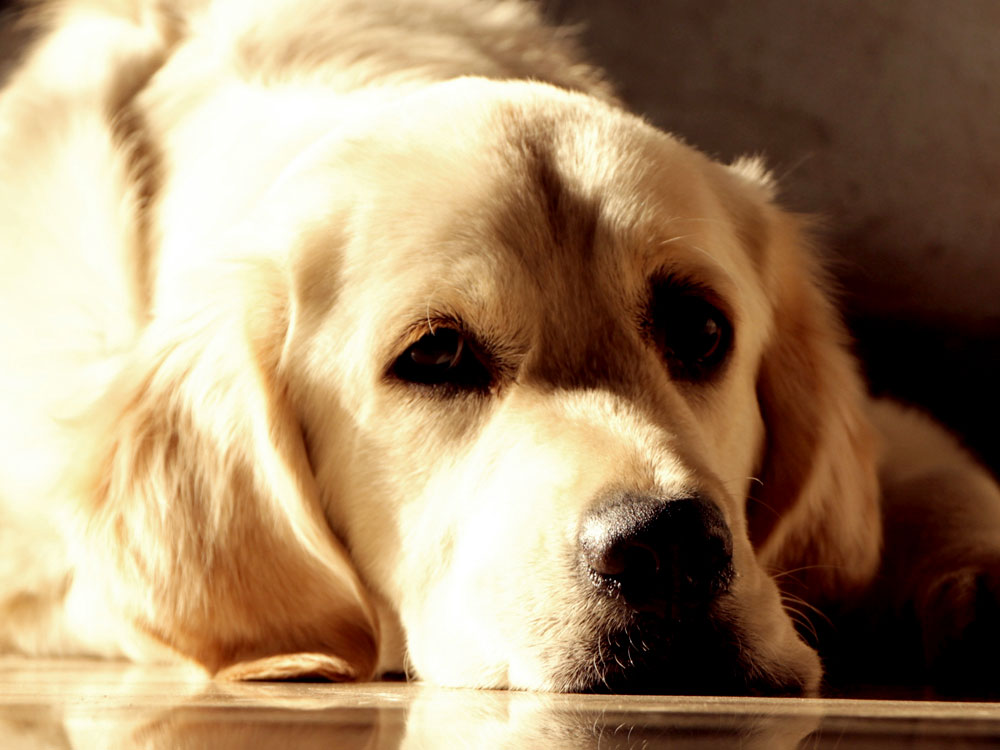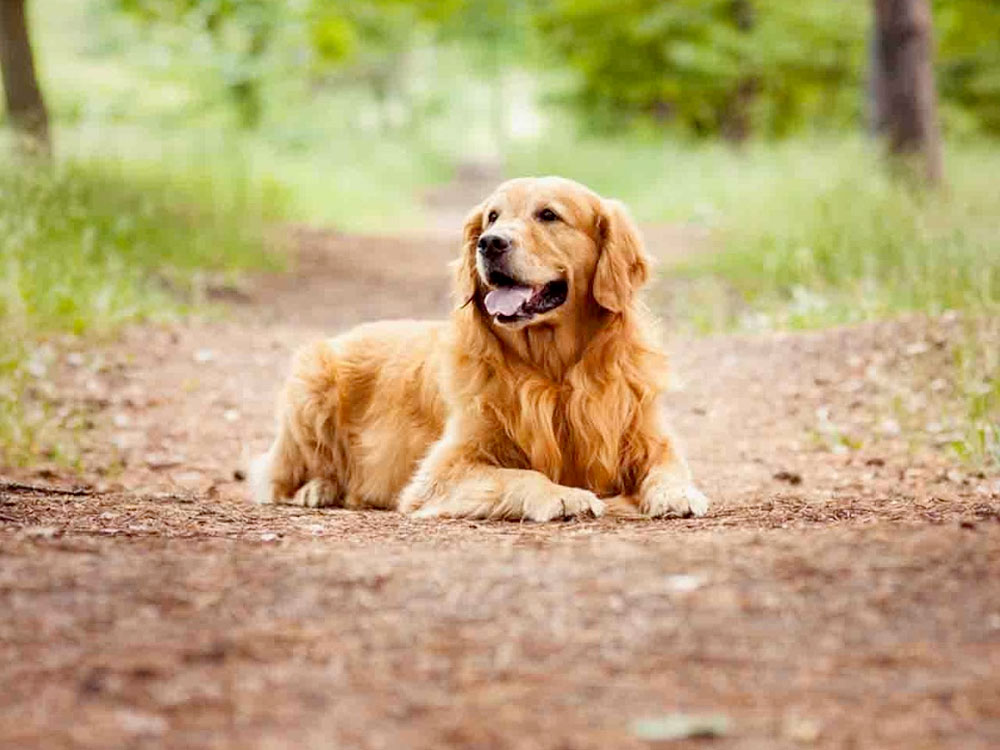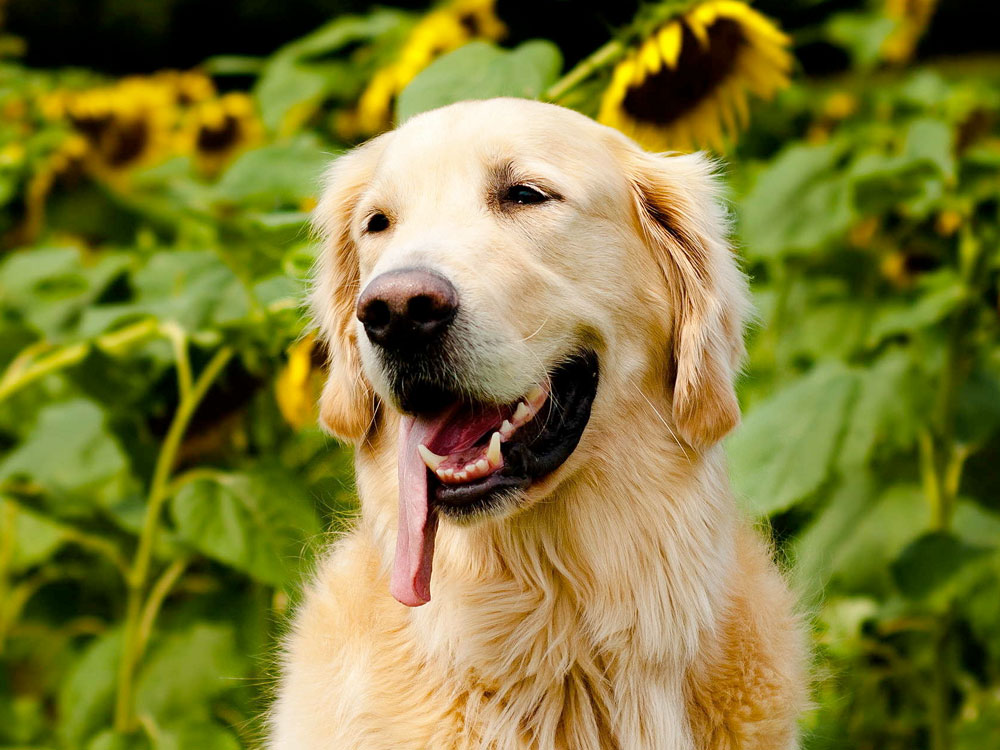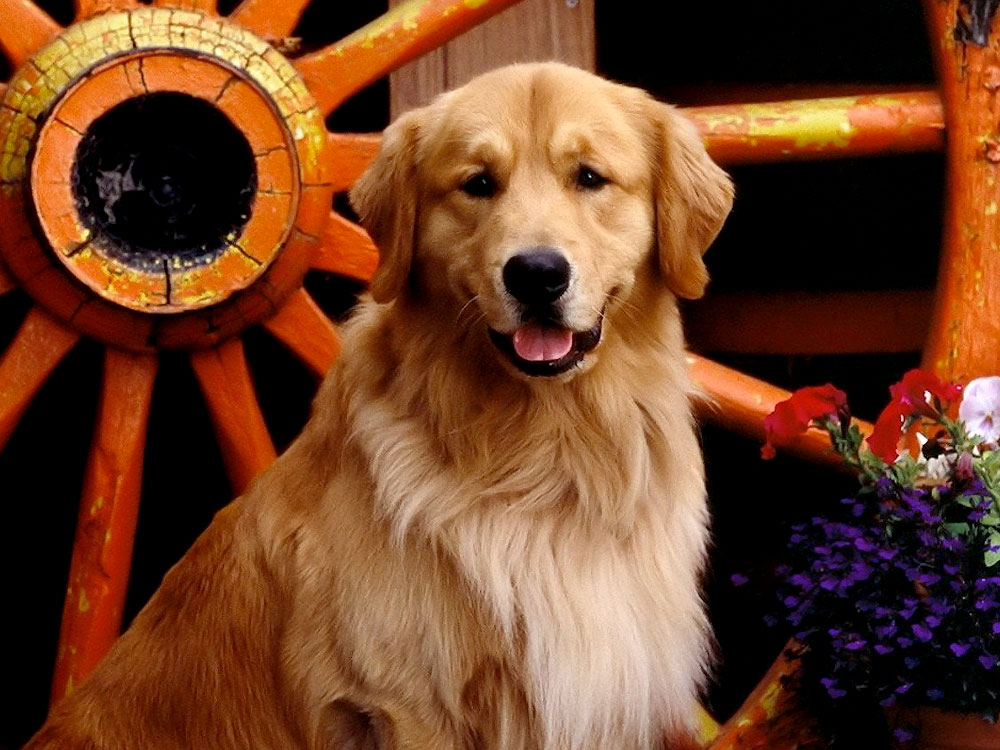
Golden Retriever Breed Pictures
Vital Breed Stats
| Height: | 58 - 61 cm M | 55 - 55 cm F |
| Weight: | 29 - 34 kg M | 25 - 29 kg F |
| Breed Group: | Utility Dog Group |
| Life Expectancy: | 10 - 13 years |
| KC Registered: | No |
Breed Characteristics
| Size: |  |
| Grooming: |  |
| Exercise Level: |  |
| Barking Level: |  |
| Good with Children: |  |
| Good with other pets: |  |
| Affectionate: |  |
| Protective: |  |
| Cost to Keep: |  |
Give a thumbs up if you love the Golden Retriever

0
More About the Breed
History
The history of this popular dog breed is not that clear because there are a lot of versions. It was believed that Golden Retrievers descended from Russian sheepdogs found in a circus in the mid-1800s. It is said Sir Dudley Marjoribanks or Lord Tweedmouth, brought these dogs and took them to his estate in Scotland. During the 1950s, his great nephew, the 6th Earl of Ilchester debunked this legend. His stud book that was kept since 1835 revealed the first yellow dog was purchased in Brighton, England in 1862. The puppy, named Nous, came from a litter of black Retrievers and was used as a hunter companion.
Nous was bred with Belle, a Tweed Water Spaniel, a now extinct breed that was an exceptional and calm retriever. The offspring as then crossed with a red setter. As Tweedmouth kept his breeding programme, he retained all the yellow puppies and gave away the others. The main roles of these dogs were to retrieve ducks and other fowls hit by hunters. Golden Retrievers were recognised by The Kennel Club in 1911, and the American Kennel Club in 1932.
Appearance
The Golden Retriever is a large dog but scary is definitely not something you will use to describe its appearance. Weighing 55 to 75 pounds and standing 51 to 62 centimetres at the withers, it is friendly and loving. It is a well-balanced dog with a powerful body. It has a well chiselled skull, strong neck, powerful muzzle, and medium-sized ears. It has dark brown eyes that radiate a gentle and intelligent expression.
This breed is easily recognisable because of its lush golden coat with some feathering. It has a dense and water-repellent outer coat with a thick undercoat. They either come in straight or wavy coats. According to the Kennel Club standards, the ideal colour is any shade of gold or cream, and never red or mahogany. A few white hairs on the chest is allowed. Heavy feathering is seen on the chest, tail and back of the thighs. It also has fur feathers on its underbody and the back of the front legs.
Grooming
With its thick coat, the Golden Retriever requires a lot of grooming. Owning a Golden means getting used to hair in clothes and furniture. It sheds all year round and heavily in the spring and fall. Daily brushing helps minimise loose hair all over the house as well as prevents tangling and distribute natural oils. Bathing should be done at least once a month especially when it spends a lot of time outside. Nonetheless, unlike other high-maintenance dogs, it is manageable and does not necessarily need to be groomed professionally.
Aside from daily brushing your dog’s coat, regular brushing of the teeth is also recommended to prevent tartar build-up. Be careful not to cut too far when trimming your dog’s nails to avoid bleeding. Check the ears for redness and other signs of infection. Grooming your dog at home is okay, but careful regular veterinary examination is recommended to detect early signs of illness.
Temperament
Golden Retrievers, despite their big size, are very easy to care for because of their biddable nature. In fact, they are one of the top choices for families and first-time dog owners. They are gentle, intelligent, confident, friendly, and affectionate. They are slow to mature and they tend to retain their childlike and silly personality. They are friendly to everybody, which does not make them good watchdogs because they will happily shower strangers with kindness and love. They enjoy being around people and are very eager to please. This means that they need to live indoors with their family and cannot stand being left alone.
They are great for families with young children. However, supervision is needed during interactions with toddlers as they may accidentally knock them over. They can also get along with other animals, regardless of type and size. As a full-fledge retriever, they are over the moon when they have something to carry in their mouths. A newspaper, ball or soft chewtoy will be perfect.
Intelligence
The Golden Retriever is also naturally smart and obedient. It easily learns things and could retains the skills it acquires. Because of their great characteristics, including patience and focus, they can sit quietly for long hours in hunting blinds. They excel in obedience training and even ranked as one of the top breeds in obedience trainability. They can also be trained as assistance, search-and- rescue, and service dogs. No need for harsh or strict methods because The Golden will enthusiastically participate in training.
Golden Retrievers may have general pre-dispositions, but this does not mean that each is not unique. Each dog breed’s temperament and intelligence are shaped by different factors which include, but are not limited to, its genetics, the environment where the puppy is raised, as well as the training it receives.
Nutrition
- Senior and less active: up to 1,070 calories daily
- Typical adults: 1,300 to 1,500 calories daily
- Physically active/working dogs: 1900 to 2,500 calories daily, depending on activity level.
Feeding
Health
Golden Retrievers are generally healthy but predisposed to certain medical conditions. They usually develop allergies that typically manifest as skin irritations. Monitor their food intake and make sure they don’t eat rapidly or drink too much to avoid obesity and Gastric Dilation and Volvulus. They are also prone to develop Hip Dysplasia, Elbow Dysplasia, Subvalvular Aortic Stenosis, Osteochondrosis Dissecans (OCD), and Von Willebrand's Disease.
Also watch out for Epilepsy, Hypothyroidism, Osteosarcoma, Hemangiosarcoma, and eye problems like Cataracts and Progressive Retinal Atrophy (PRA).
Exercise
Cost of Ownership
Owning a dog might prove to be a tad expensive. However, the costs depend primarily on the type of dog you are getting. Some dogs may cost you a lot on veterinary visits, while there are dog breeds that will cost you an arm and a leg on food – especially those with a voracious appetite.
For a Golden puppy, the standard price is £500, but it is considerably more if you buy a pedigree dog from a reputable breeder. On the other hand, the cost of a mature Golden Retriever is around £4,300. It is recommended to have the dog groomed every six to eight weeks. Pet grooming will cost the dog owner £325 to £430 annually.
Is a Golden Retriever Right for You?
- Golden Retrievers were bred to retrieve and have “soft mouth.”
- As gundogs, they require a lot of physical exercises.
- Daily brushing is recommended due to their thick coat.
- They are boisterous and can knock over things unintentionally, even small kids.
- Golden Retrievers are obedient, which makes them super easy to train.
- They eat a lot and tend to be fat if not exercised properly.






